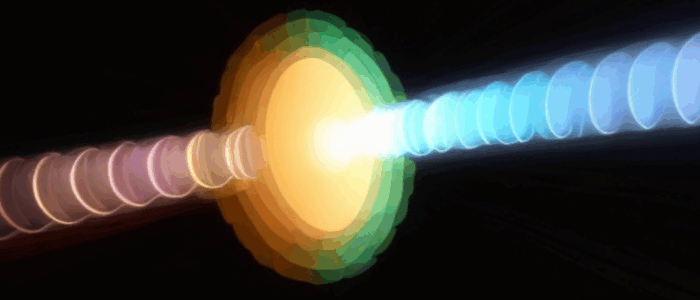Welcome to IATE
The Instituto  de Astronomía Téorica y Experimental (The Institute of Theoretical and Experimental Astronomy, IATE), is a scientific research institute jointly run by the Consejo Nacional de Investigaciones Científicas y Técnicas (CONICET) and the Universidad Nacional de Córdoba (UNC). Its headquarters are located at the Observatorio Astronómico de Córdoba.. The institute’s staff conduct astrophysical research from both observational and theoretical perspectives, studying objects on scales ranging from those within our Solar System to the largest structures in the Universe.
de Astronomía Téorica y Experimental (The Institute of Theoretical and Experimental Astronomy, IATE), is a scientific research institute jointly run by the Consejo Nacional de Investigaciones Científicas y Técnicas (CONICET) and the Universidad Nacional de Córdoba (UNC). Its headquarters are located at the Observatorio Astronómico de Córdoba.. The institute’s staff conduct astrophysical research from both observational and theoretical perspectives, studying objects on scales ranging from those within our Solar System to the largest structures in the Universe.
IATE’s members include researchers, doctoral students, postdoctoral fellows, and support staff. They are actively involved in developing human resources at both the undergraduate and postgraduate levels.
The institute is also recognised for its work in site characterisation for the installation of major astronomical facilities in Argentina, as well as for a range of outreach activities aimed at engaging society with astronomical research.
Press Releases
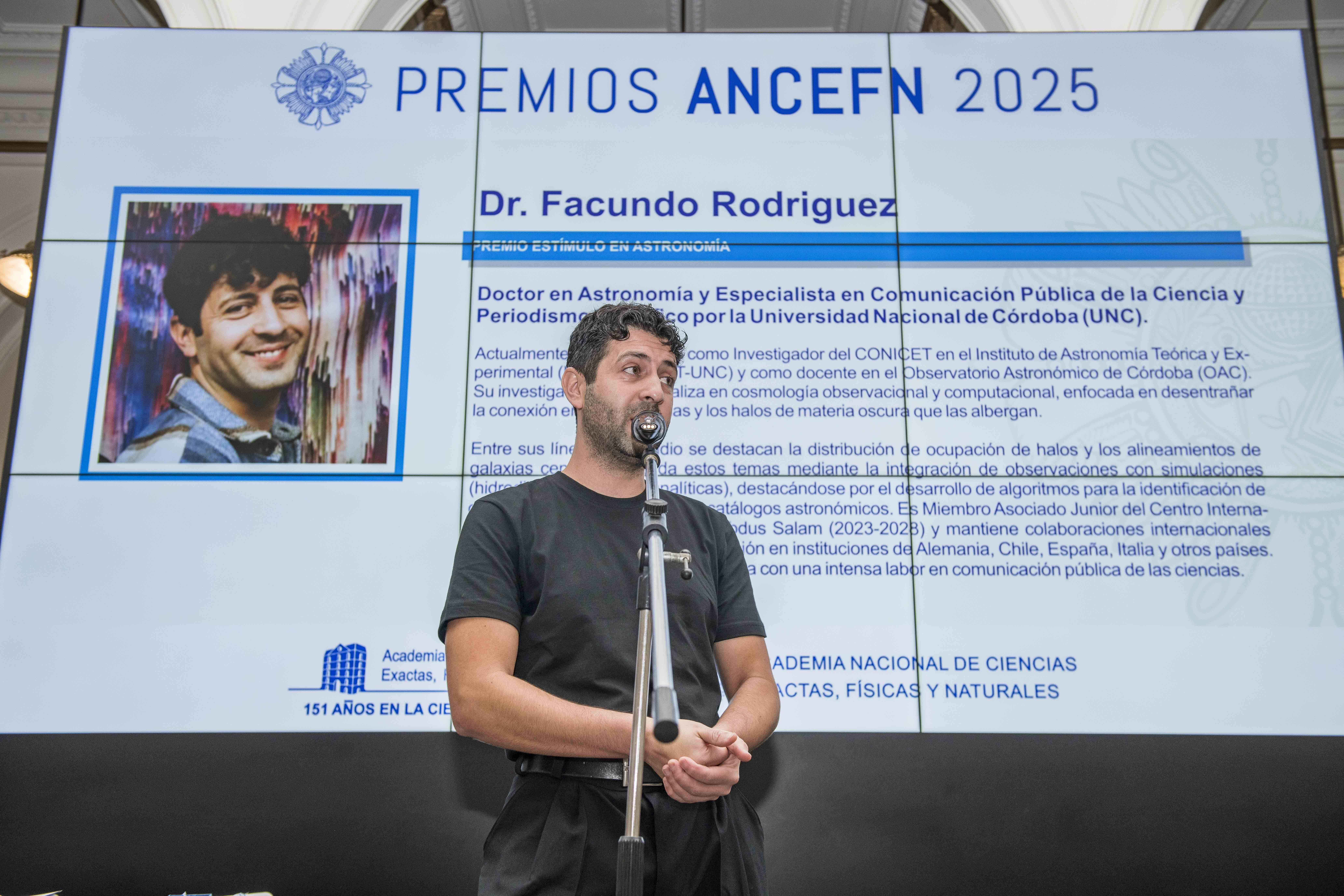 FACUNDO RODRÍGUEZ RECEIVES THE ANCEFN PREMIO ESTÍMULO 2025 - El Instituto de Astronomía Teórica y Experimental se complace en anunciar que el Dr. Facundo Rodríguez, investigador del CONICET vinculado al IATE, fue distinguido con uno de los Premios Estímulo otorgados por la Academia Nacional de Ciencias Exactas, Físicas y Naturales (ANCEFN) en la edición 2025. La ceremonia se llevó…
FACUNDO RODRÍGUEZ RECEIVES THE ANCEFN PREMIO ESTÍMULO 2025 - El Instituto de Astronomía Teórica y Experimental se complace en anunciar que el Dr. Facundo Rodríguez, investigador del CONICET vinculado al IATE, fue distinguido con uno de los Premios Estímulo otorgados por la Academia Nacional de Ciencias Exactas, Físicas y Naturales (ANCEFN) en la edición 2025. La ceremonia se llevó…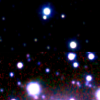 Exploring the unexplored: the IATE discovers tens of thousands galaxies behind the Milky Way, highlighting María Victoria Alonso’s efforts - Un equipo internacional liderado por la investigadora María Victoria Alonso del Instituto de Astronomía Teórica y Experimental (IATE-CONICET) y el Observatorio Astronómico de Córdoba (OAC – UNC) ha logrado un avance significativo en el estudio de una de las regiones más difíciles de observar del universo: la Zona de Exclusión…
Exploring the unexplored: the IATE discovers tens of thousands galaxies behind the Milky Way, highlighting María Victoria Alonso’s efforts - Un equipo internacional liderado por la investigadora María Victoria Alonso del Instituto de Astronomía Teórica y Experimental (IATE-CONICET) y el Observatorio Astronómico de Córdoba (OAC – UNC) ha logrado un avance significativo en el estudio de una de las regiones más difíciles de observar del universo: la Zona de Exclusión…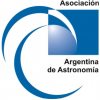 Dr. Nelson Padilla Receives Prestigious José Luis Sérsic Award for Senior Researcher 2025 - El Dr. Nelson Padilla, actual director del Instituto de Astronomía Teórica y Experimental (IATE), ha sido galardonado con el Premio José Luis Sérsic al Investigador Consolidado 2025 por la Asociación Argentina de Astronomía. Este reconocimiento no solo celebra su carrera, sino que también es un motivo de orgullo especial…
Dr. Nelson Padilla Receives Prestigious José Luis Sérsic Award for Senior Researcher 2025 - El Dr. Nelson Padilla, actual director del Instituto de Astronomía Teórica y Experimental (IATE), ha sido galardonado con el Premio José Luis Sérsic al Investigador Consolidado 2025 por la Asociación Argentina de Astronomía. Este reconocimiento no solo celebra su carrera, sino que también es un motivo de orgullo especial… Nelson Padilla, IATE Director, Joins Academia Nacional de Ciencias Exactas, Físicas y Naturales as National Corresponding Member - El Dr. Nelson Padilla, actual director del Instituto de Astronomía Teórica y Experimental (IATE), se suma a la prestigiosa Academia Nacional de Ciencias Exactas, Físicas y Naturales como académico correspondiente nacional. Esta incorporación destaca su trayectoria y sus contribuciones en los estudios del universo. La noticia representa un…
Nelson Padilla, IATE Director, Joins Academia Nacional de Ciencias Exactas, Físicas y Naturales as National Corresponding Member - El Dr. Nelson Padilla, actual director del Instituto de Astronomía Teórica y Experimental (IATE), se suma a la prestigiosa Academia Nacional de Ciencias Exactas, Físicas y Naturales como académico correspondiente nacional. Esta incorporación destaca su trayectoria y sus contribuciones en los estudios del universo. La noticia representa un…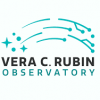 IATE brings Argentina into the new era of astronomy with Rubin telescope - A más de 2.600 metros de altura, en los cerros del norte de Chile, un nuevo ojo gigante acaba de abrirse al universo. Es el telescopio Vera C. Rubin, el más avanzado de su tipo. Recientemente captó sus primeras imágenes de prueba: una señal clara de que una nueva era…
IATE brings Argentina into the new era of astronomy with Rubin telescope - A más de 2.600 metros de altura, en los cerros del norte de Chile, un nuevo ojo gigante acaba de abrirse al universo. Es el telescopio Vera C. Rubin, el más avanzado de su tipo. Recientemente captó sus primeras imágenes de prueba: una señal clara de que una nueva era…


